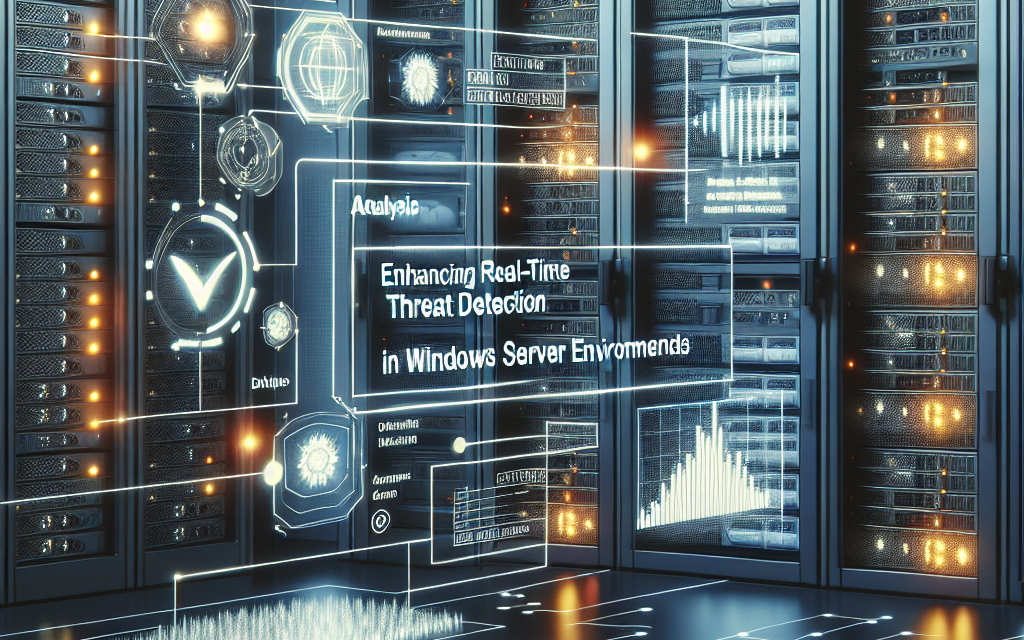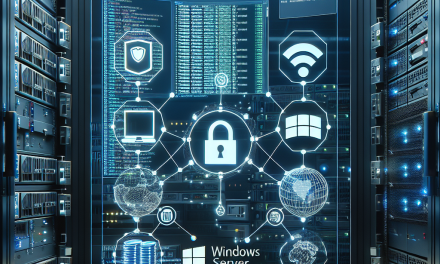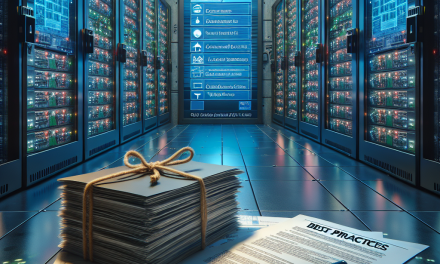In an age where cyber threats are evolving rapidly, maintaining robust cybersecurity measures is vital for any organization, especially those leveraging Windows Server environments. Real-time threat detection is a crucial aspect of a comprehensive security strategy that can help mitigate risks and safeguard sensitive data. This article will explore best practices, tools, and strategies for enhancing real-time threat detection in Windows Server environments.
Understanding Real-Time Threat Detection
Real-time threat detection refers to the ability to identify and react to potential security incidents as they occur. The sooner a threat is detected, the faster a response can be initiated, minimizing damage and data loss. Real-time detection systems often use a combination of signature-based detection, behavior analysis, and machine learning algorithms to identify threats.
Why Real-Time Detection is Crucial for Windows Server
-
Increasing Complexity: Windows Server environments are often complex and dynamic, hosting applications, services, and data that are critical to business operations. This complexity makes them attractive to cybercriminals.
-
Regulatory Compliance: Many industries are governed by strict regulations regarding data protection. Real-time threat detection not only helps in compliance but also in avoiding hefty fines.
-
Minimizing Downtime: Cyber attacks can lead to significant downtime, affecting productivity and customer trust. Quick detection allows for faster recovery and minimizes interruptions.
Best Practices for Enhancing Real-Time Threat Detection
1. Employ Advanced Threat Protection Tools
Utilize tools such as Windows Defender Advanced Threat Protection (ATP), which offers real-time detection, investigation, and response capabilities. Windows ATP can automatically detect and respond to advanced attacks while providing deep visibility into the environment.
2. Leverage Security Information and Event Management (SIEM)
Implementing a SIEM solution allows organizations to aggregate and analyze security logs in real time. SIEM tools like Microsoft Sentinel enable automated alerting based on predefined rules and can correlate data from various sources, enhancing threat visibility and response capabilities.
3. Network Segmentation
Segmenting your network can limit the spread of threats. By isolating critical systems and limiting access, organizations can reduce their attack surface. Network segmentation should be complemented by real-time monitoring and alerts.
4. Regular Updates and Patching
Ensure that your Windows Server environment is always up-to-date with the latest security patches. Vulnerabilities in outdated software can be exploited, increasing the risk of a security breach. Automated patch management tools can help streamline this process.
5. Enable Windows Firewall and Advanced Security Features
Ensure that Windows Firewall is properly configured. Utilize advanced features, such as Connection Security Rules and Network Security Rules, to bolster your security posture further.
6. Utilize Endpoint Detection and Response (EDR)
EDR solutions provide continuous monitoring and response capabilities for endpoints, offering a more profound level of insight into threats. Solutions like Microsoft Defender for Endpoint can actively monitor for unusual behavior, allowing security teams to respond more effectively.
Training and Awareness
While technology plays a critical role in threat detection, human factors should not be overlooked. Regular training for IT staff and end-users can significantly enhance your organization’s security posture. Phishing simulations and awareness campaigns can help users recognize potential threats, reducing the likelihood of successful attacks.
Incident Response Planning
Having an effective incident response plan is pivotal in minimizing the impact of a breach. Ensure that your organization has a clear procedure to follow in the event of a detected threat. Conduct regular drills to ensure that your team is prepared and that roles are clearly defined.
Conclusion
Real-time threat detection is an essential part of securing Windows Server environments. By implementing advanced security tools, adopting best practices, and fostering a culture of security awareness, organizations can significantly enhance their ability to detect and respond to threats in real time. As cyber threats continue to evolve, being proactive and vigilant will ensure your organization remains resilient against potential attacks.
For more insights and tips on enhancing your Windows Server security, stay tuned to our WafaTech Blogs!





